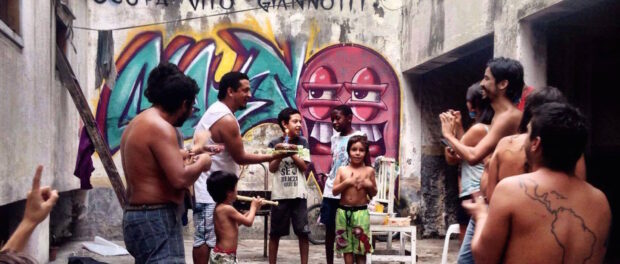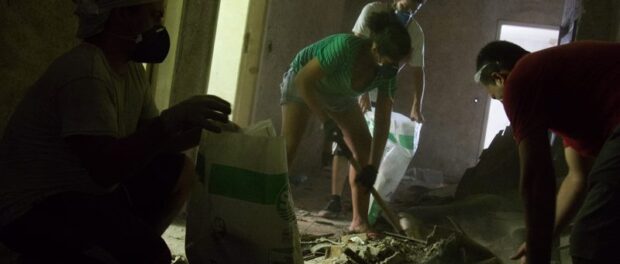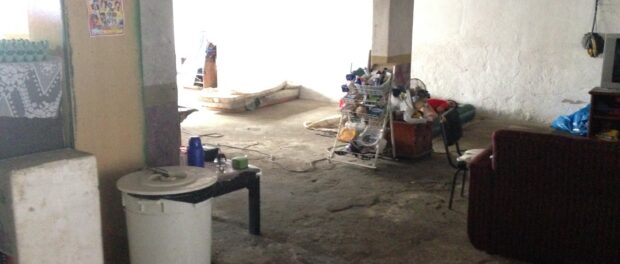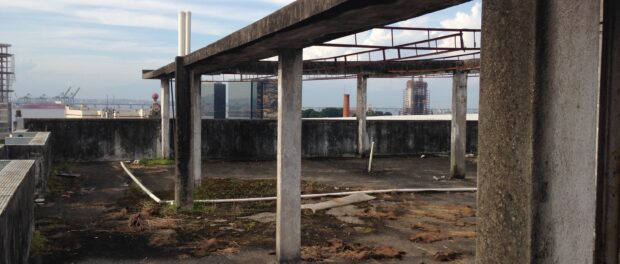
On Sunday March 6, residents and social movement leaders at the Vito Giannotti Occupation in Santo Cristo in Rio’s Port Region held the third mutirão event to renovate the occupation space. Mutirão translates loosely to ‘collective action’ in Portuguese and refers to an event bringing community members together to undertake some group action on behalf of the collective good. Often, mutirão events are held in communities to build homes, sewerage systems, clean up abandoned lots and streams, or to add another floor to an existing home. Around 40 people from Vito Giannotti and its supporters joined the event.
Since the occupation began in late January, residents and social movement leaders have been working hard to negotiate with Brazil’s National Institute for Social Security (INSS), which owns the building, and the Ministry of Cities and the Caixa Econômica Federal Bank to initiate the transformation of the site into public housing.
The occupation intends to apply for Minha Casa Minha Vida-Entidades (MCMV-En) funding to carry out further renovations to the building. MCMV-En is a small portion of the overall Minha Casa Minha Vida federal housing program that allows nonprofit organizations, collectives and associations to apply for funds and build and develop their own housing.
The Vito Giannotti Occupation’s goal is to ensure that the building, which has been designated since 2006 to be turned into public housing, fulfills its social function, especially in an area that is undergoing major changes. There has been very little progress since the promises made in August to increase the number of affordable housing units available in the Port Region. Further, Dilma Rousseff’s administration announced in December that the third phase of Minha Casa Minha Vida would commence this month. The large-scale program has received criticism for poor quality construction and creating conditions which reproduce social injustice. In this context, the Vito Giannotti Occupation’s determination to develop self-managed housing in a central location is important.
Though most of the structure of the abandoned hotel building is in good shape, its occupants work hard to clean damaged rooms. There are a few rooms in the back of the hotel that remain unfit for living until occupants find solutions to ward off moisture. In the past, the hotel interior was mostly covered with wallpaper. Although the wallpaper is gone, there is a thin layer of glue that covers almost every wall of the second and third floors. Much of the mutirão on March 6 was spent scraping this paste from the walls as well as removing carpet and other debris.
The occupation residents have high hopes for the hotel building. The first and fourth floors will be set aside for community spaces, as well as a small daycare for children in the community. Every existing two to three rooms in the hotel will be transformed to house the families in accordance with MCMV-En standards. The occupants plan to create an office space inside the hotel so that social movement workers can spend more time there and help the efforts as well. On the top floor veranda which looks out over the Port Region and North Zone, occupants hope to build a community meeting space for 50-70 people.
The occupation process has not been easy. There has been resistance from the Federal Police who tried to force the occupants out of the building, and the occupation faces legal uncertainty, since they do not yet have full legal rights to live in the building.
When asked how the housing situation in Rio could be improved, the occupants noted the large number of abandoned buildings that could be transformed into housing at relatively low cost. They also emphasized the importance of this occupation in the context of the Port Region as a whole, which has historically lacked adequate housing and is now facing gentrification pressures from projects under the Porto Maravilha development program such as the Museum of Tomorrow and the Light Rail System under construction.
As one member of the occupation, Julio, confirmed, “We cannot keep up with rising rents and the value of the property. We cannot stop eating to live. Adequate housing is a right for all and we must fight for it.”



